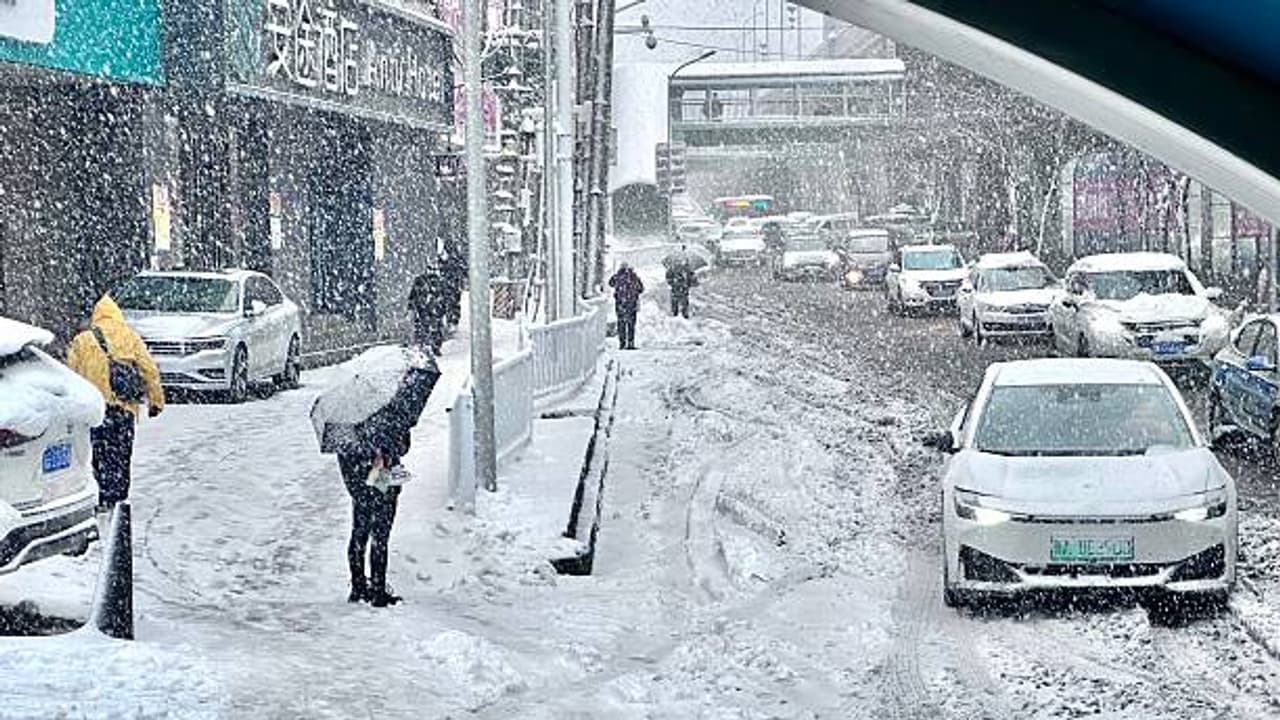Beautiful Xinjiang, a state-driven initiative to rebrand the region as a thriving mosaic of ethnic unity. Chinese outlets such as CGTN and China Daily flood international platforms with videos portraying Xinjiang as peaceful and prosperous.
The sun climbs over Kashgar’s old city, gilding its restored facades and winding lanes. Influencers adjust their tripods, capturing dancers, markets, and turquoise domes glinting under the morning light. The scenes are perfect—almost too perfect. What the lenses avoid are the watchtowers that shadow the streets and the surveillance poles lining every corner.
China’s information machine has learned a new language: the language of normalcy. Through glossy travel vlogs, influencer diaries, and state-sponsored media tours, Beijing now wages a quiet war over perception—one that replaces barbed wire with curated beauty and repression with rehearsed joy.
A Tourist Paradise Built for the Camera
At the heart of this campaign lies Beautiful Xinjiang, a state-driven initiative to rebrand the region as a thriving mosaic of ethnic unity. Chinese outlets such as CGTN and China Daily flood international platforms with videos portraying Xinjiang as peaceful and prosperous.
Between January 2020 and August 2021, at least 156 state-controlled accounts pushed over 550 posts featuring foreign travel vloggers extolling the region’s “authentic culture” and “religious freedom.” Internally, officials call this tactic “borrowing mouths to speak”—using foreign faces to echo Beijing’s talking points.
One widely circulated video showed German YouTuber Ken Abroad marvelling that he saw “more mosques in Xinjiang than in Europe.” Within hours, Chinese diplomats and media accounts amplified the clip, presenting it as independent proof of harmony. Yet this digital choreography collapses when tested against verifiable evidence.
Independent journalism is almost impossible inside Xinjiang. Foreign correspondents who try to report beyond escorted tours face intimidation, tailing, and visa threats. Only two foreign reporters managed to enter the region in 2022—a 94 per cent drop from the previous year.
What Satellites Reveal
Where reporters are blocked, satellites bear witness. Analysts at the Australian Strategic Policy Institute (ASPI) have mapped a parallel Xinjiang—one unseen in influencer reels. Their studies identified at least 380 suspected detention centres constructed or expanded since 2017.
Between early 2016 and September 2018 alone, 28 camps grew by an average of 465 per cent in total area, reaching roughly 2.7 million square metres. One facility in Hotan ballooned from a modest 7,000 square metres to nearly 173,000—a 2,400 per cent increase.
Cultural destruction has marched in tandem. ASPI estimates that about 16,000 mosques—two-thirds of those once standing—have been damaged or demolished. Many that remain have lost their domes and minarets, stripped of Islamic motifs to blend with the Party’s preferred aesthetic of “cultural integration.”
Tourists, meanwhile, are shepherded through a handful of preserved cityscapes like Kashgar’s “Old Town,” rebuilt for the camera. The result is a stage set: fragments of authenticity surrounded by silence.
The UN’s Stage-Managed Visit
The 2022 visit of UN Human Rights Chief Michelle Bachelet exposed how tightly Beijing controls this narrative. Her six-day tour operated under “closed-loop” COVID restrictions that prevented spontaneous movement. Every meeting, site visit, and conversation was pre-screened.
Human rights groups warned that the trip risked becoming a propaganda showcase. They were proven right. While Bachelet was touring model schools and community centres, the Xinjiang Police Files were released to the public—tens of thousands of internal documents, including mugshots of detainees, shoot-to-kill orders, and directives from senior officials.
Among them were over 5,000 photographs of hooded and shackled prisoners, guarded by armed officers in camouflage. Independent forensic experts later authenticated the data. No tourism video can erase those images.
Reality Versus the Reel
In August 2022, the UN’s own report stopped short of calling the repression genocide but concluded that China’s actions “may constitute crimes against humanity.” That phrase carries legal weight—it means the evidence meets the threshold for grave international offences.
Yet Beijing’s digital production line continues uninterrupted. Influencer campaigns, drone footage, and soft-focus documentaries keep rolling out, each designed to overwrite collective memory with an algorithmic flood of “positive energy.”
But the truth leaks through the seams. It lives in high-resolution satellite images, in leaked police files, in testimonies of survivors who speak of forced labour, indoctrination, and sexual violence. No amount of cinematic editing can drown out their voices.
Manufactured Normalcy Has an Expiry Date
China’s propaganda of normalcy seeks to convince the world that repression is rehabilitation and surveillance is safety. But reality—like light through a crack—eventually filters in.
The fences still stand, the watchtowers still rise, and the digital eyes still follow every movement across the desert. The world’s satellites see them even when Beijing’s cameras refuse to. The “Beautiful Xinjiang” that floods social media is, in truth, a mirage—a tourist paradise built atop silence and fear.
And while Beijing can choreograph smiles, it cannot choreograph memory. Truth, once documented, outlasts propaganda.
